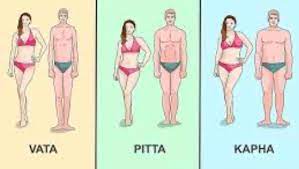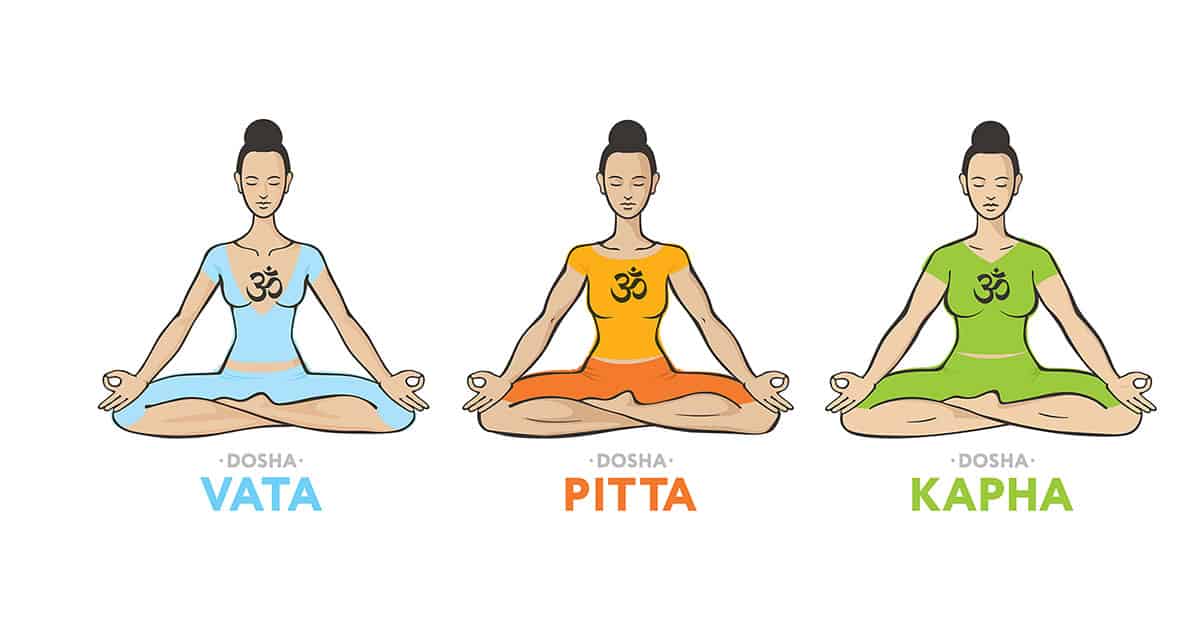In my previous blog post I tried to stay serious and analyze the elements in Ayurveda in detail. 🙂
As I have mentioned in my last post, elements create a combination of two among themselves and form three types of energy which we call as “doshas”. Which combination of the elements constitute which dosha? What are the characteristics of each doshas? Let’s take a closer look at these questions.
Doshas and Elements: Vata, Pitta and Kapha

Vata
Due to Vata’s basic composition (air and space (ether)), they are physically light. They have a narrow body and they are thin. Vata is often identified with “movement” and “change”. The areas of movement in the human body are represented by vata. For example, breathing, blinking, muscle movements, heartbeat, cytoplasm movements in cells emerge as vata features. While the balanced vata energy triggers flexibility and creativity, the imbalance of the vata energy manifests itself as fear, anxiety and some other behavioral disorders. Vatas are anxious and hyperactive. They love to multitask and do many things at once, but due to their weak endurance, they tend to overstrain themselves and are consumed away easily. Vata species are creative, flexible and open-minded, their enthusiasm is often fascinating. Vata people do their best with a good routine, regular mealtimes, and plenty of rest and warmth.
Properties of Vata; cold, light, irregular, mobile, thin, dry, lumpy.
Pitta
Pitta, created by the elements of fire and water, represents the body’s metabolic system. We can see the metabolism in the body in transformations such as digestion, absorption, and body temperature. While balanced pitta energy manifests itself as perception and intelligence, imbalanced pitta energy causes problems such as anger, hatred, jealousy, impatience and inflammation. Pitta is medium muscular and well developed. Because of its basic composition (fire and water), their metabolism is strong and they usually feel warm. They are determined, goal-oriented and strong willed. They are great natural leaders and have a dominant personality. Pitta species have a lot of fire, so it’s important for them to avoid heating food, alcohol, coffee, and spices but cooling them.
Properties of Pitta; hot, sharp, light, liquid, oily and fluid.
Kapha
Kapha, the combination of water and earth elements, represents the structural energy of the body and the force that connects the cells, while all the fluids in the body manifest itself as kapha energy. The lubrication of the joints, the moisturizing of the skin, and the immune system are affected by the body’s kapha formation. While the balanced kapha emphasizes positive emotions such as love, calmness and gratitude, the imbalance of the kapha prepares the ground for congestive disorders as well as ambition, excessive addiction and desire for ownership. Due to the basic composition (erath (soil) and water), their physical formation is heavier. They have a round face, a broad body frame, large hips, and rounded shoulders. Their metabolism is often weak, prone to gain weight. Kapha types like to be around: cheerful, sweet and easy, calm and patient. They have very determined personalities. Regular exercise, cardio, as well as avoiding dairy products (milk, cheese, yogurt) and heavy foods such as sugar and bread will improve their metabolism. They can also use spices such as chili, black pepper, ginger and clove to speed up their metabolism.
Properties of Kapha; heavy, slow, cold, oily, liquid, slippery, dense, soft, steady, hard, sticky and big.
It is possible to find some dosha tests on the web to discover your dosha, however, getting consultation from a specialist on Ayurveda ensures the most accurate result.
On the next blog post, I will give you the nutrition suggestions and routines in Ayurveda.
Keep tuned 🙂
Anıl Uzun
